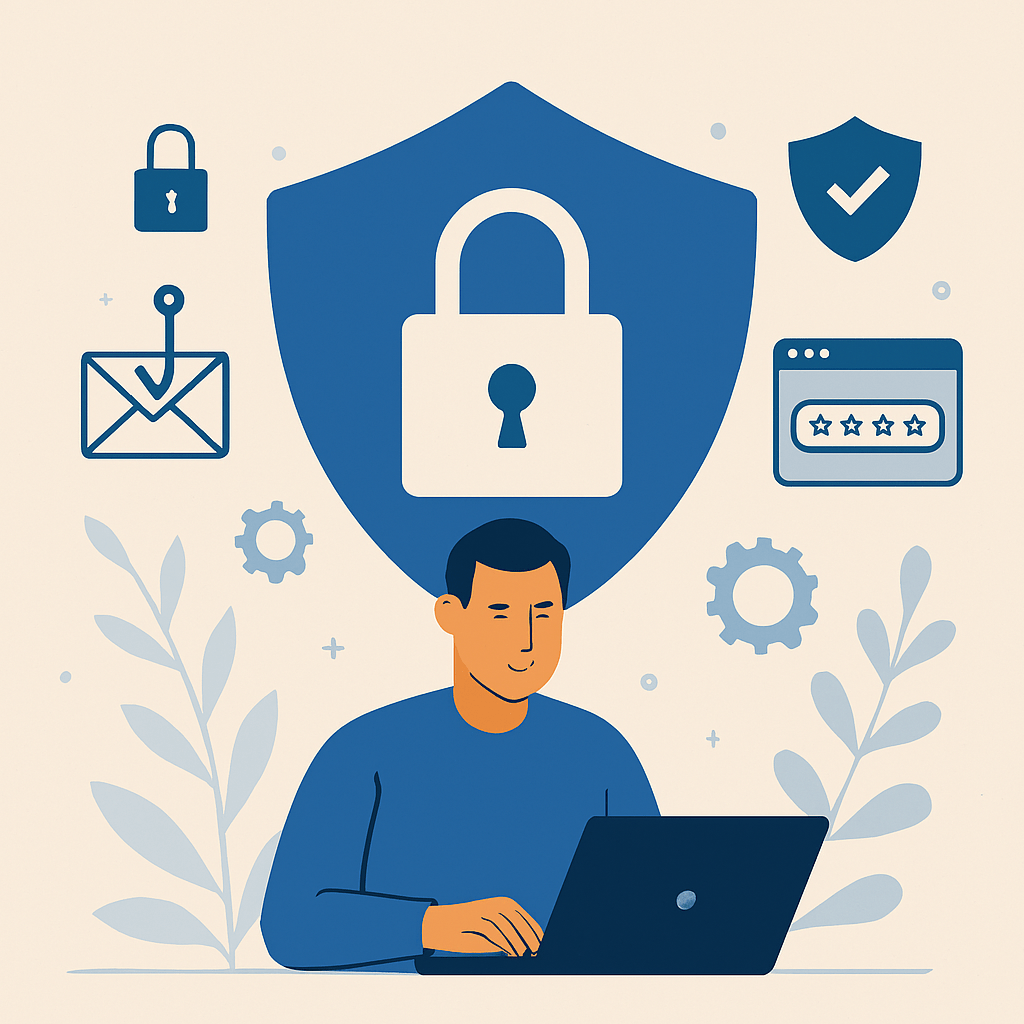Phishing attacks, if you don’t know, are a type of social engineering that mainly targets users without exploiting a vulnerability in a system. It always requires an action from the victim to carry out malicious hacking. A hacker would trick a user by sending a spoofed email as if it were sent from a trusted email address, or by making a phone call to scam the user. It is any kind of malicious attempt to trick the victim to share personal or sensitive data and/or click on a malicious link or downloading and running software that is invisibly malicious.
Before digging deeper, let me give you an example of a phishing attack. Imagine you receive a phone call from someone claiming to be from the support team of a company or a bank. Some of them may sound professional and are skilled at convincing the victim. They would attempt to trick the victim into revealing sensitive information or clicking on a link or downloading an application. If it’s a bank, they might tell the victim that the bank has published a new application and provide a link through a phishing email or a phone message. Once the victim installs the application, the attackers can spy on them and steal all their data.
Phishing attacks could be used for extortion or blackmailing by targeting anyone with smartphone, laptop, or a PC, and as they are powered by AI resulting in creating voices, photos, videos which sound and look disturbingly real, that make phishing and scams like deepfakes, sextortion, and virtual kidnapping more convincing.
Who’s Most at Risk?
Young adults are bearing the brunt. Nearly two-thirds of extortion scam victims. These scams don’t rely on technical vulnerabilities they prey on emotions, trust, and also urgency. The attackers go after what’s personal privacy and reputation.
The Anatomy of a Modern Scam
As example provided above, these scams often start with a message or call that feels urgent and personal and delivered professionally and with a high skilled phishing attacker. It could be with a threat to leak private photos, or a fake emergency involving a loved one. The goal? Push the victim into acting fast to click on the malicious links, downloading an app, or sharing sensitive info.
Why AI Makes It Worse
AI tools now allow scammers to clone voices, generate realistic videos, and personalize attacks with frightening precision. Many users have encountered a deepfake or virtual kidnapping scam.
The more digital footprints someone leaves such as photos, voice clips, social media posts, the easier it is for scammers to craft believable attacks.
HOW TO PROTECT YOURSELF FROM AI PHISHING ATTACKS
To protect you from phishing attacks, you should always be aware of the technology, and it could be utilized to attack you, such as AI.
Hackers always take advantage of the technology to perform their malicious activities more effectively, and you always should be alerted.
Below are some recommendations that you must follow to keep yourself protected:
- Always verify. Don’t trust any call you receive from a caller asking you to provide sensitive information or trying to guide you to click on a link or install software until you confirm it by asking the caller a question that only the real person would know the answer to. If you receive a call from the bank, ask the caller how much you have in your account. The bank’s support team has access to your account balance details. You can also ask the caller to hang up and call the bank directly using their official phone number.
- Think before you share. If you share a lot of your photos, stories, and posts about yourself online and on social media, you simply put yourself and your family at risk. If you become a target at any time, hackers could use all of that information about you. The more information hackers have, the more AI tools can generate fake videos, photos, voices, and more that look real.
- Always verify emails. Emails can be spoofed if the company domains are not protected. If you ever receive an email from a company you work with or receive services from, and they ask you to download an attachment, click on a link, or provide sensitive data, always call the manager or the company directly. It could be a hacker who spoofed the email and is using AI tools to make it look real and professional.
Scammers are evolving fast. But with awareness, skepticism, and online secure and smart habits, you can always stay one step ahead.
We recommend you enroll in XEye Academy’s “Complete Cybersecurity Defense Training for Non-Technical Users.” This hands-on course is designed to equip you with practical skills to stay protected against all types of modern hacking techniques.




